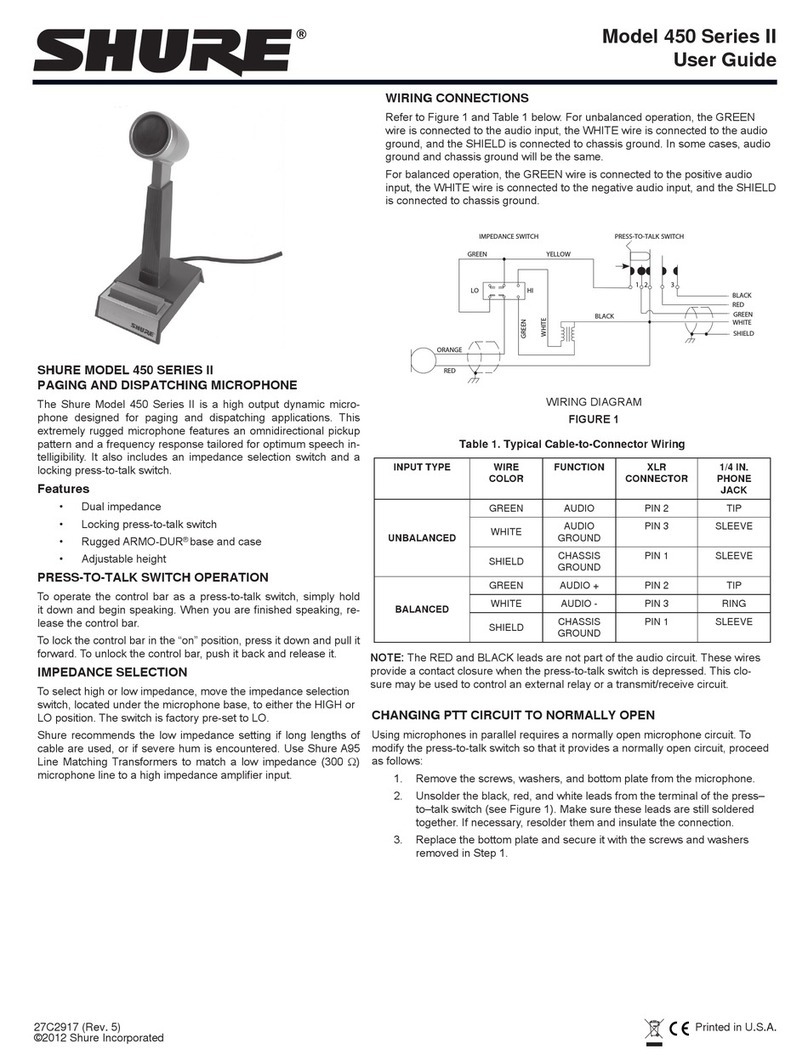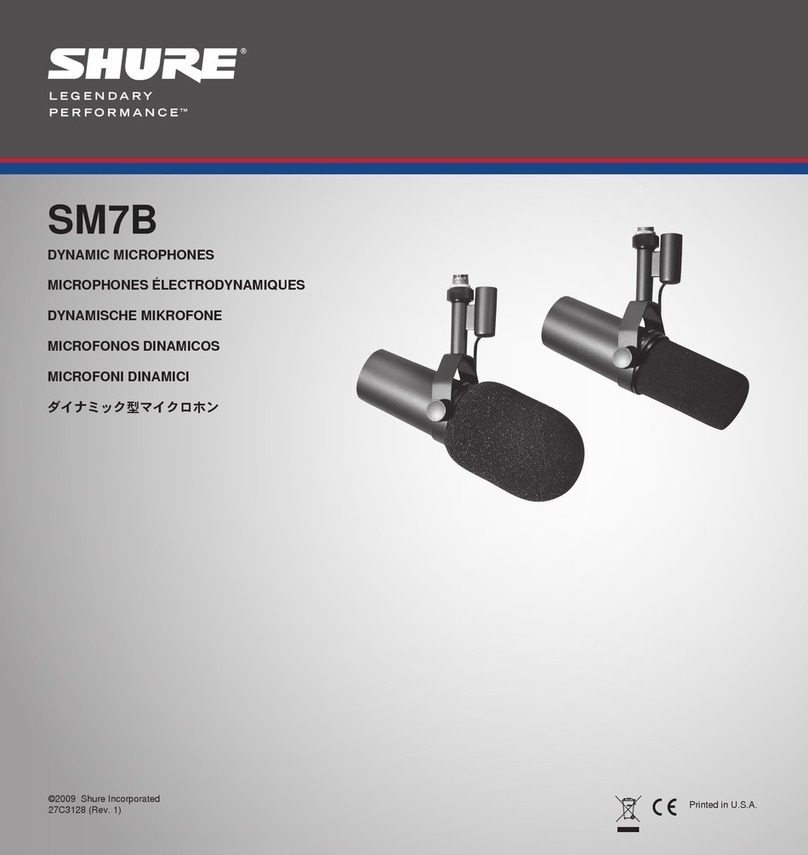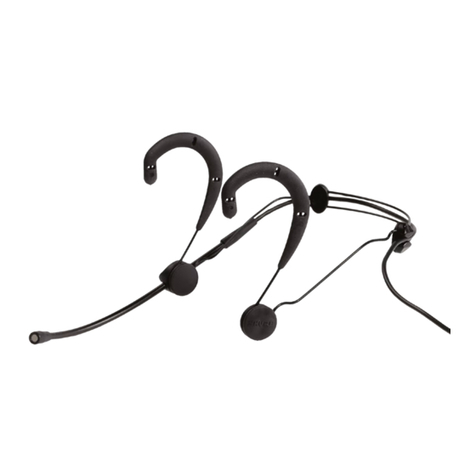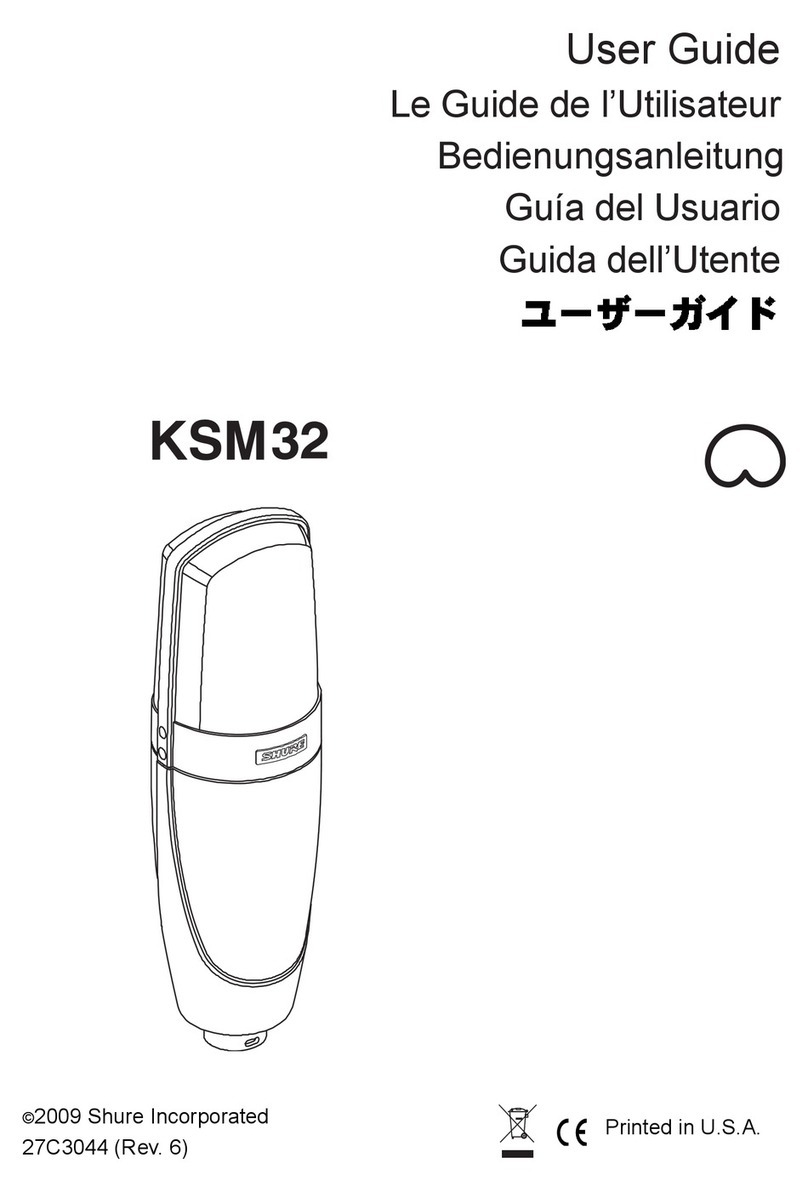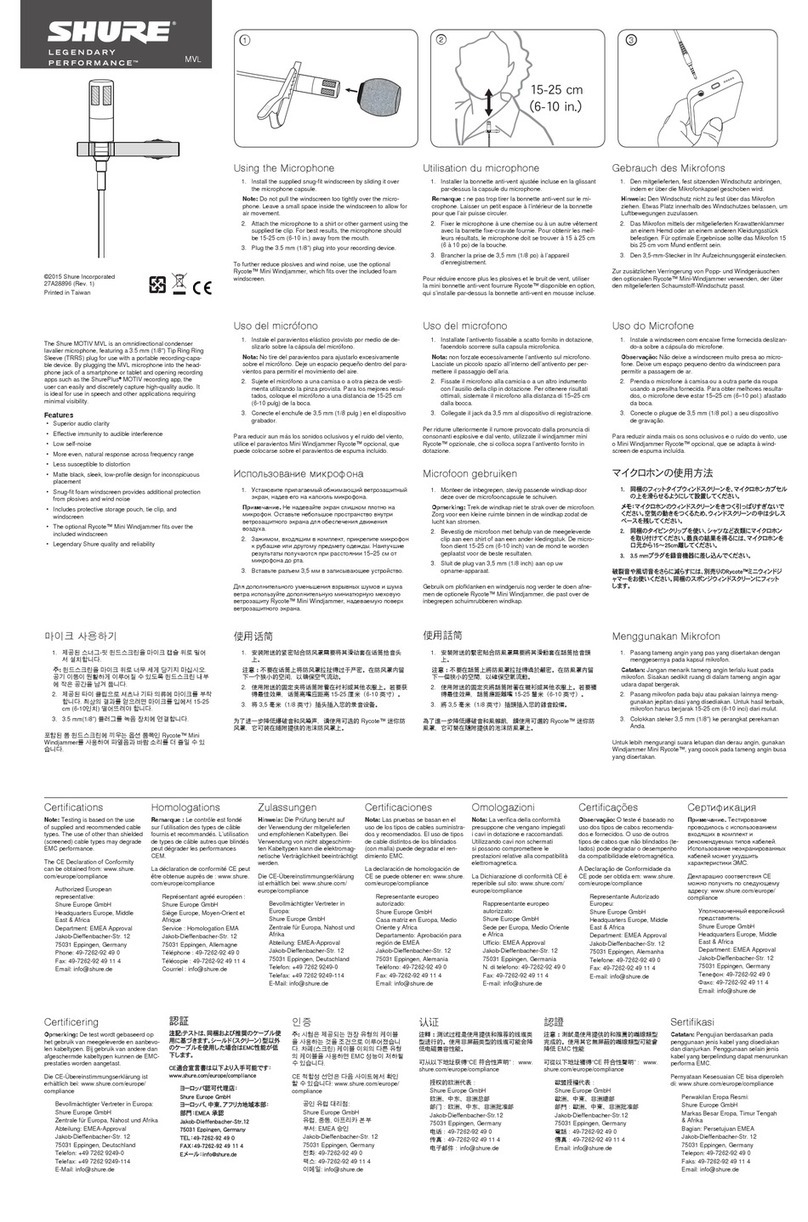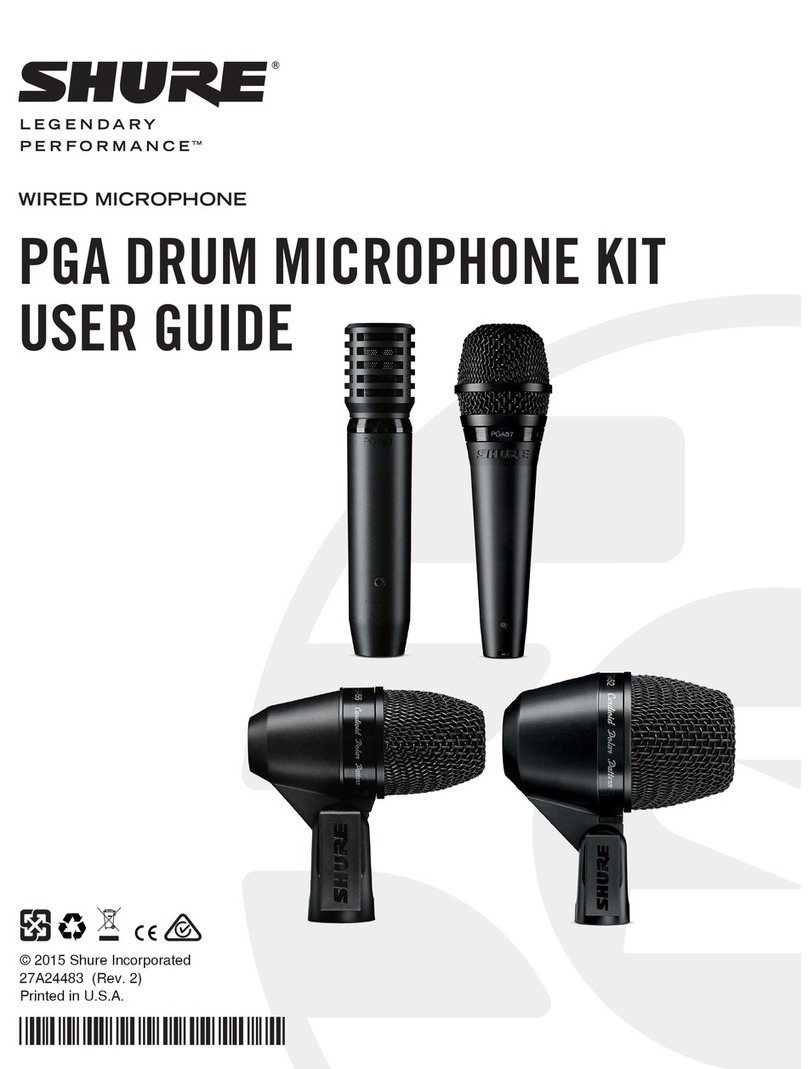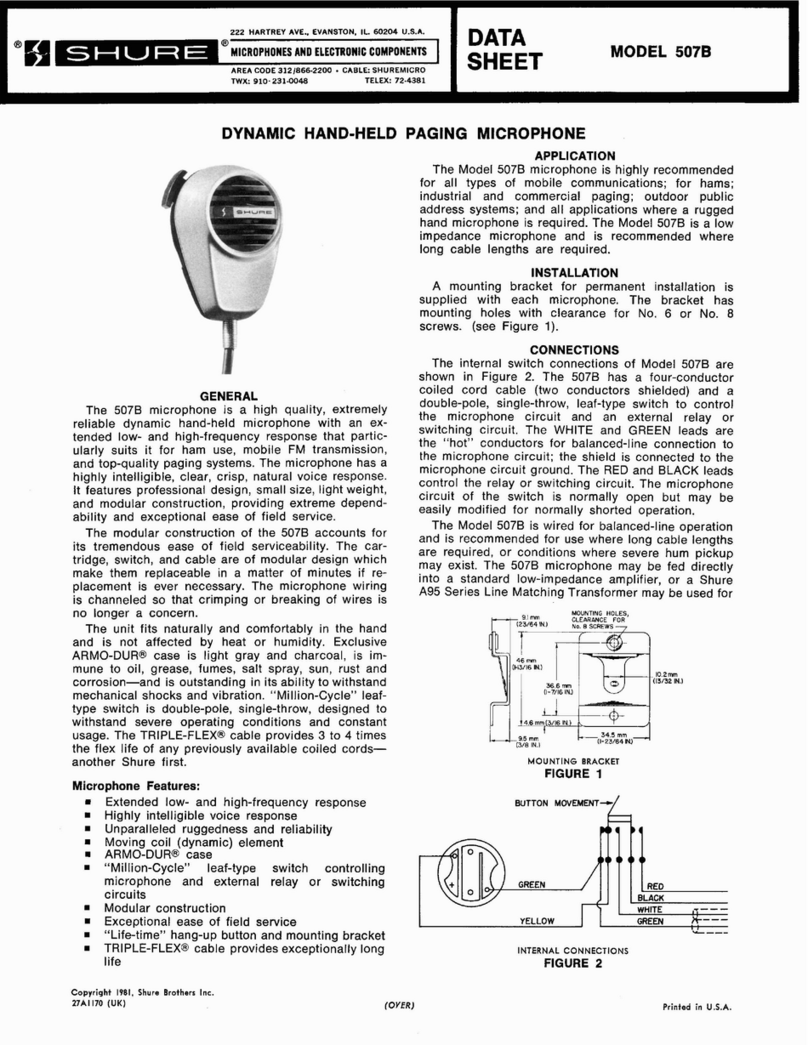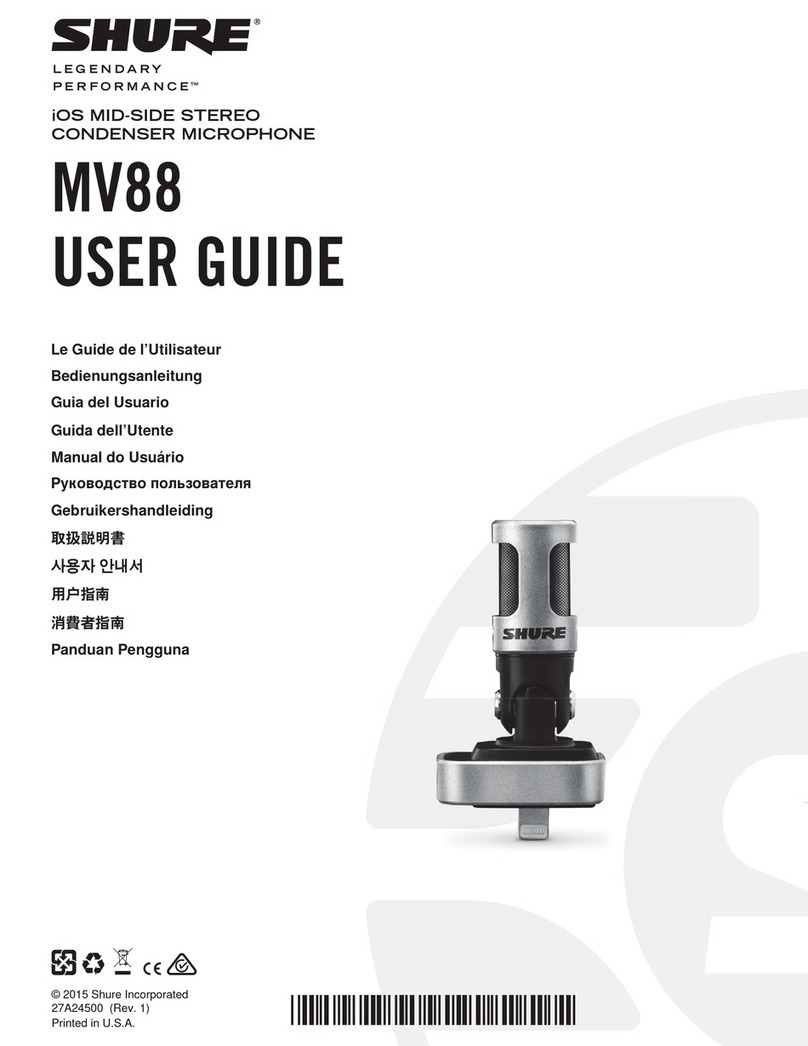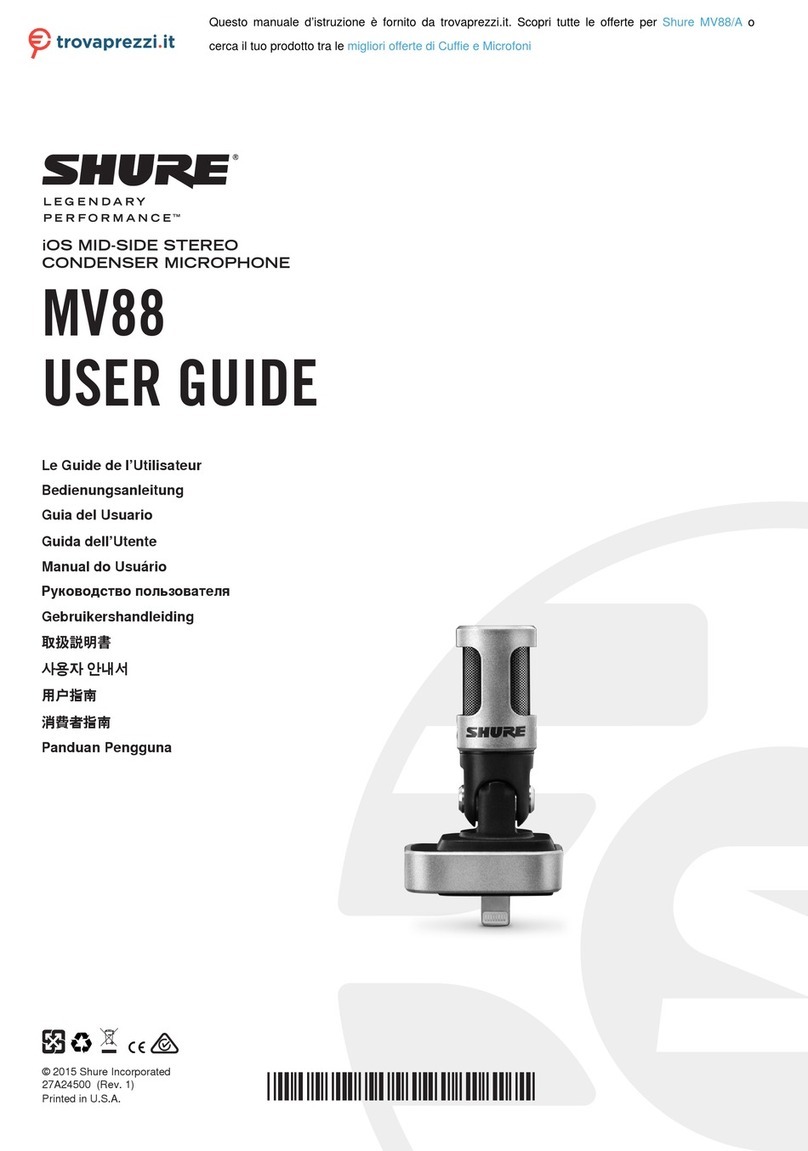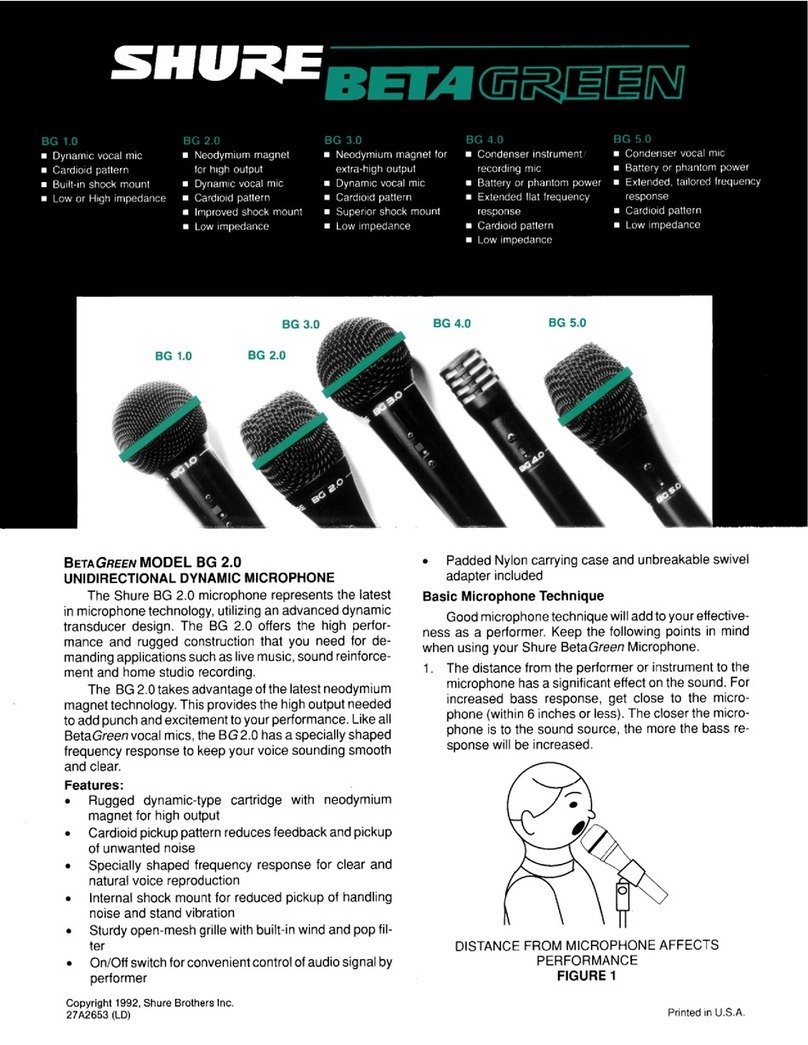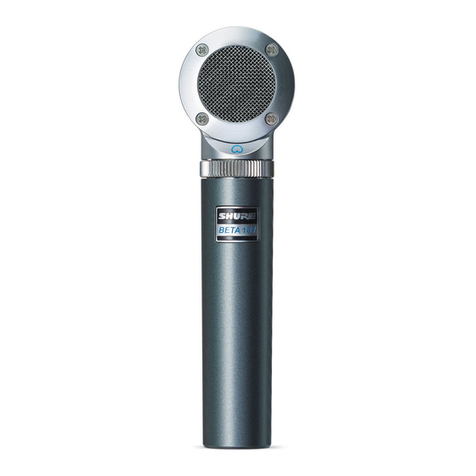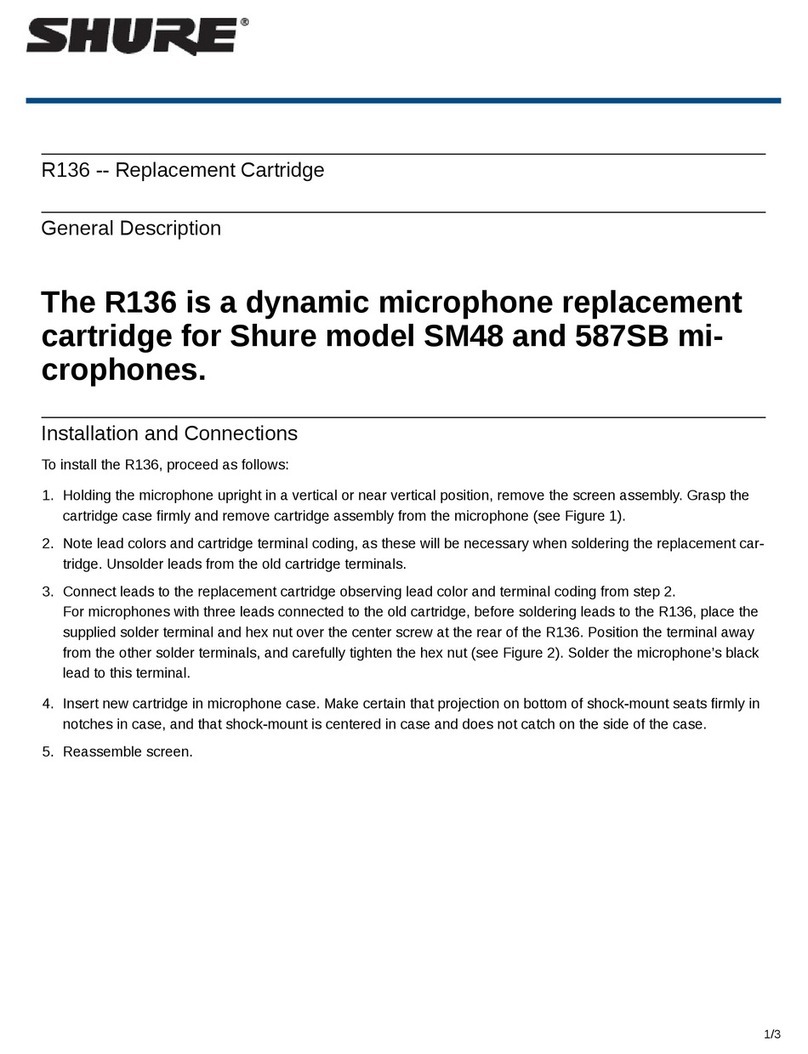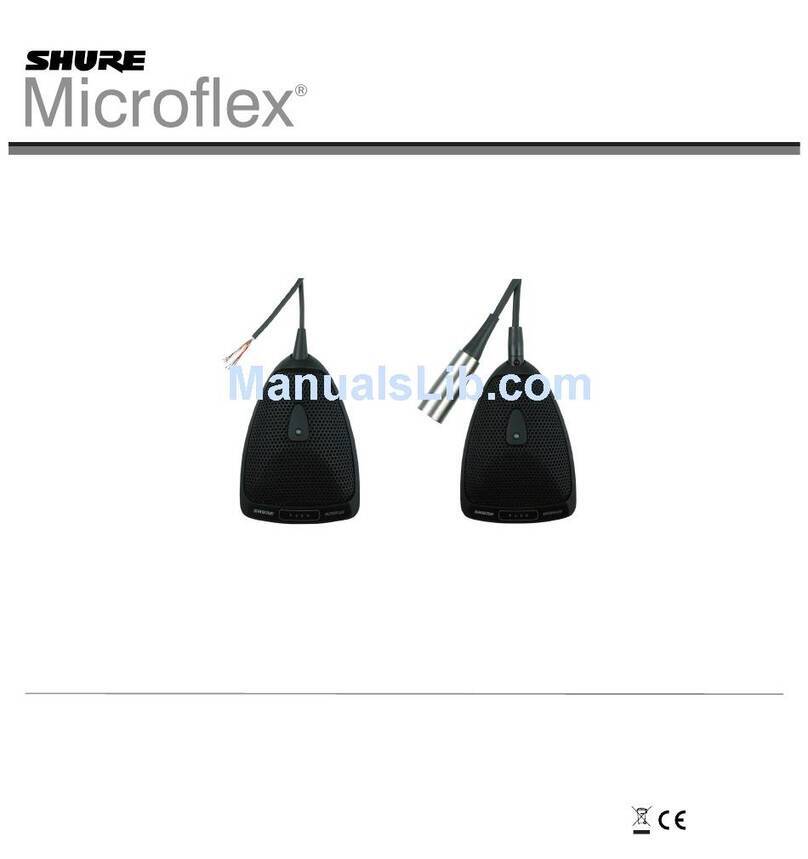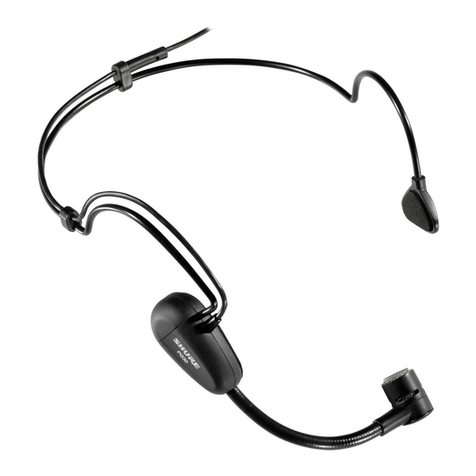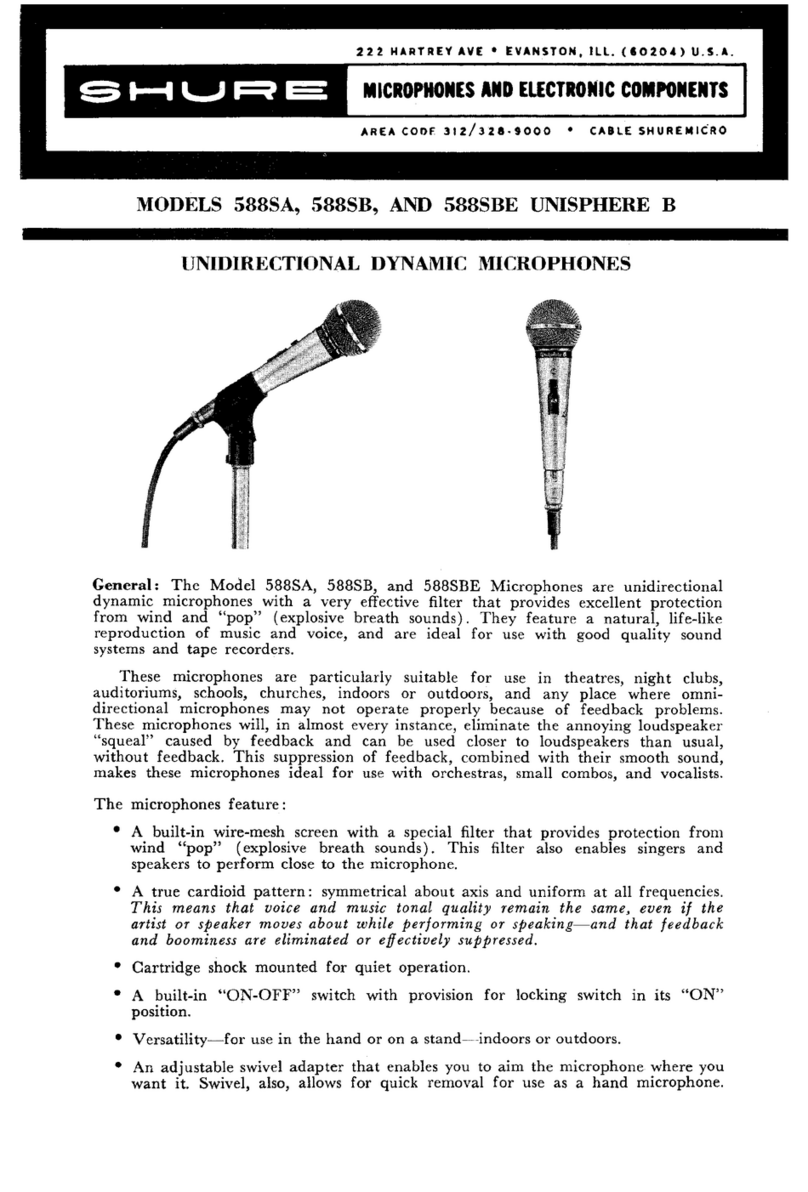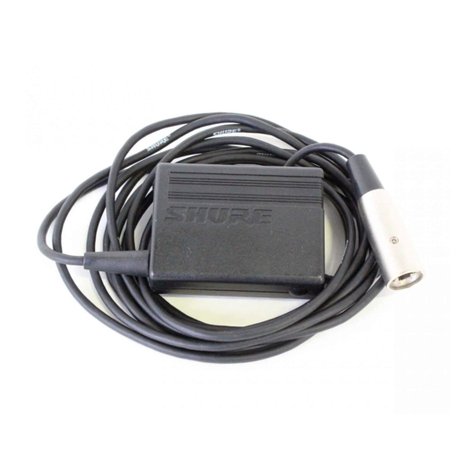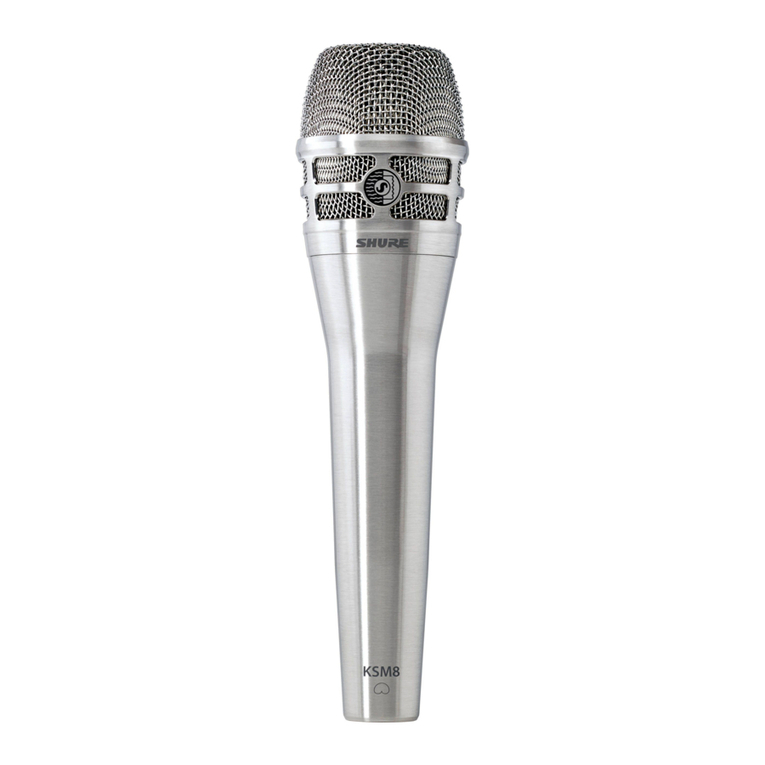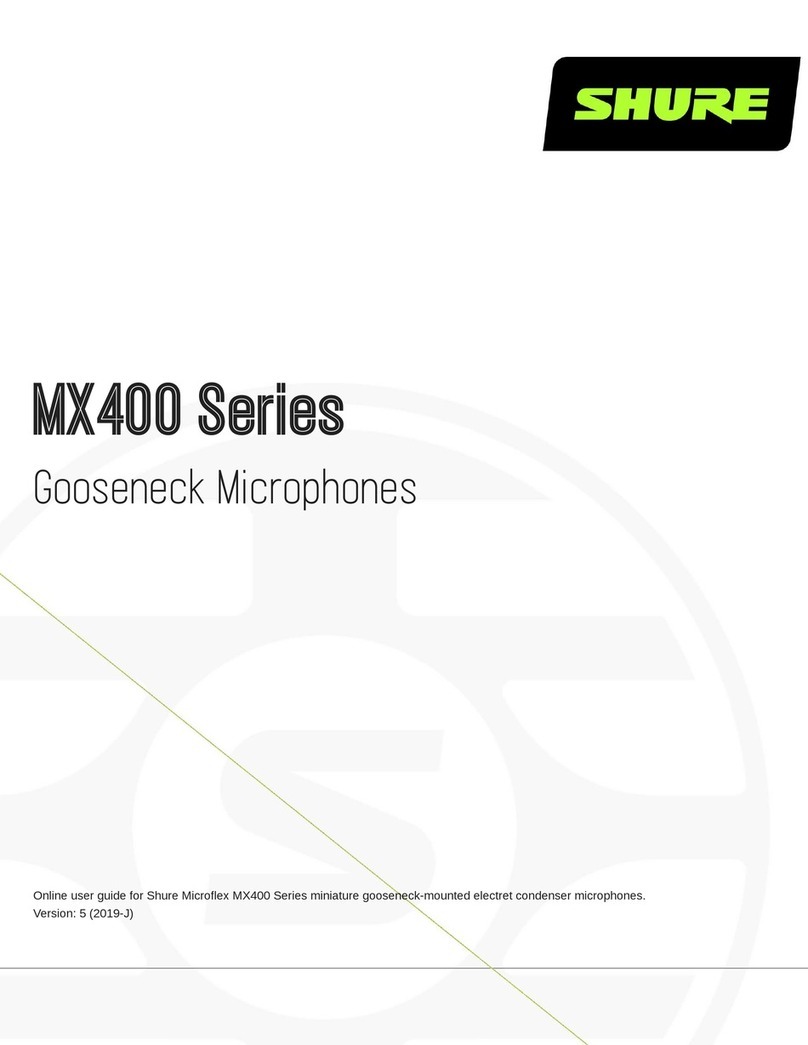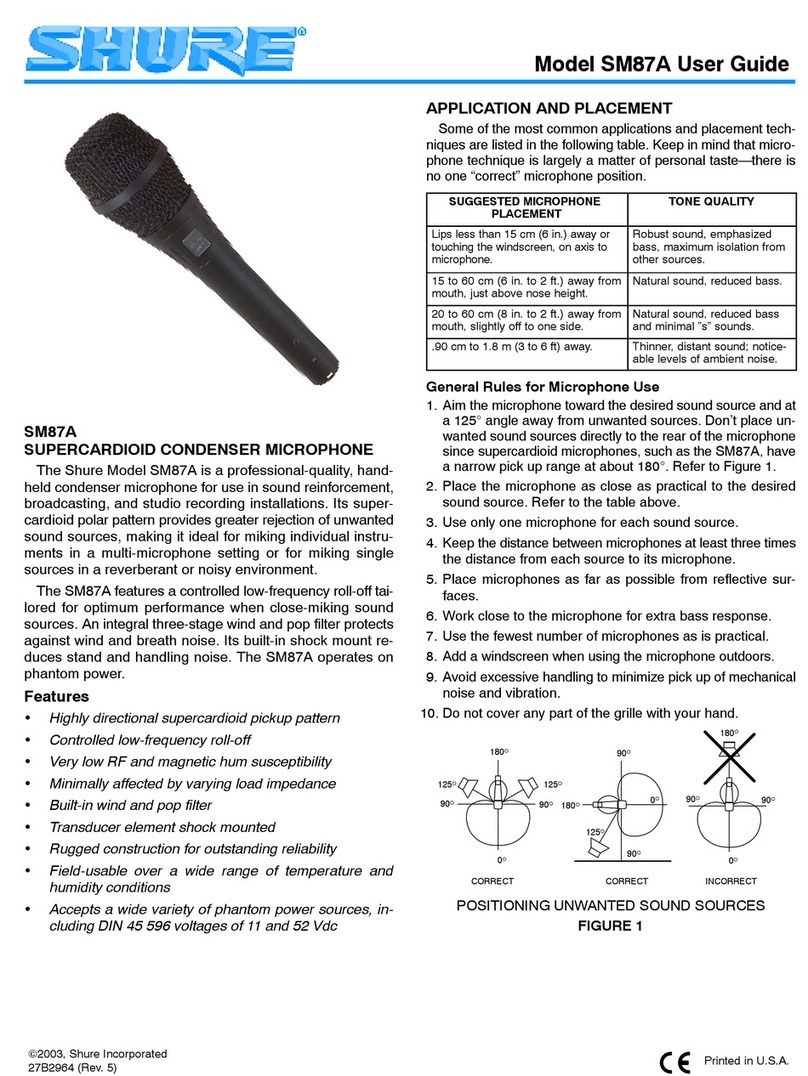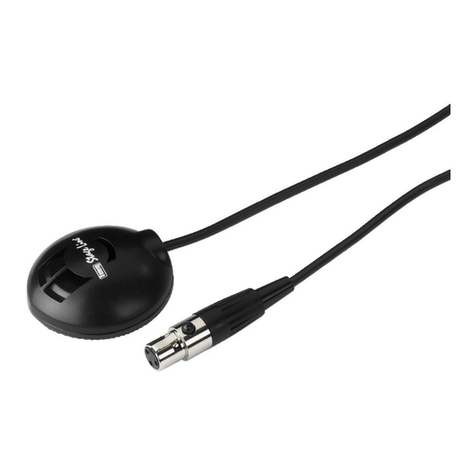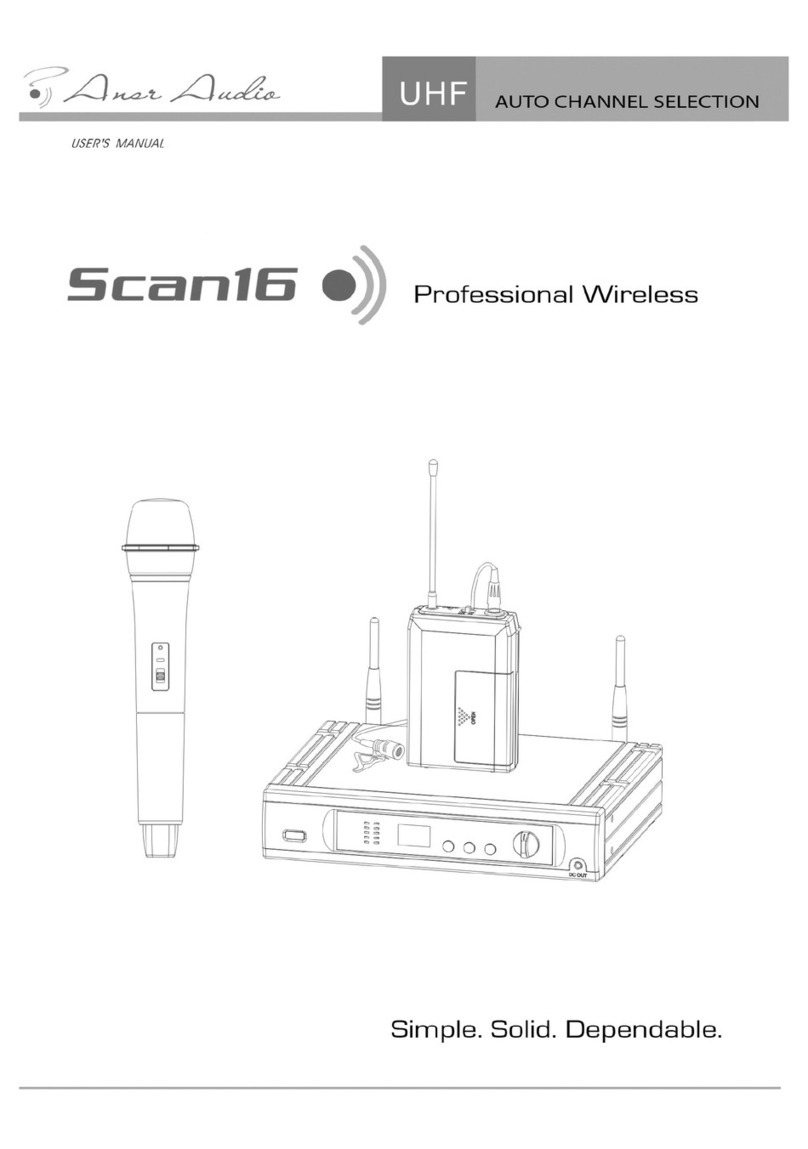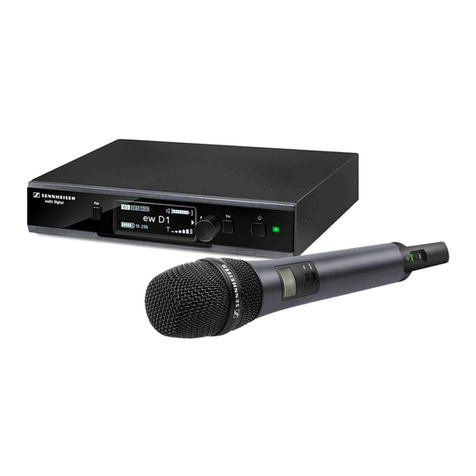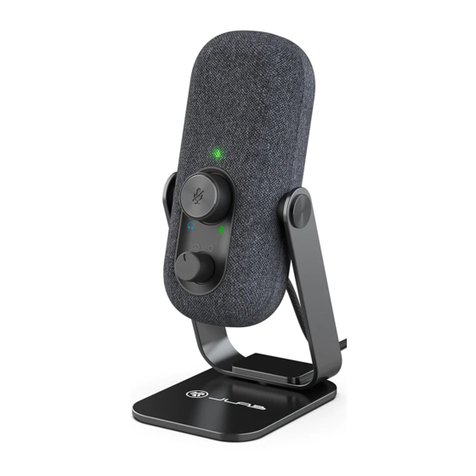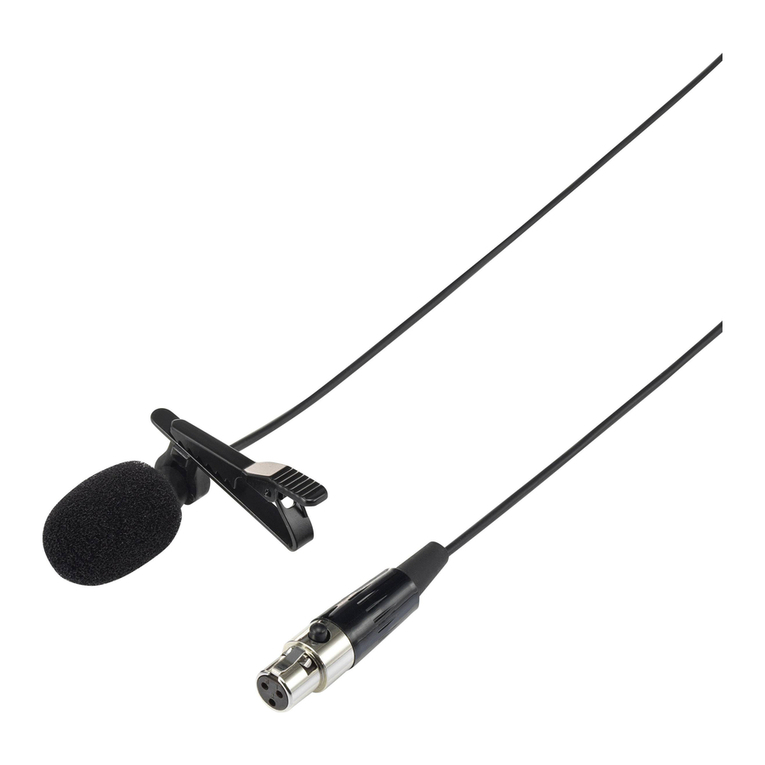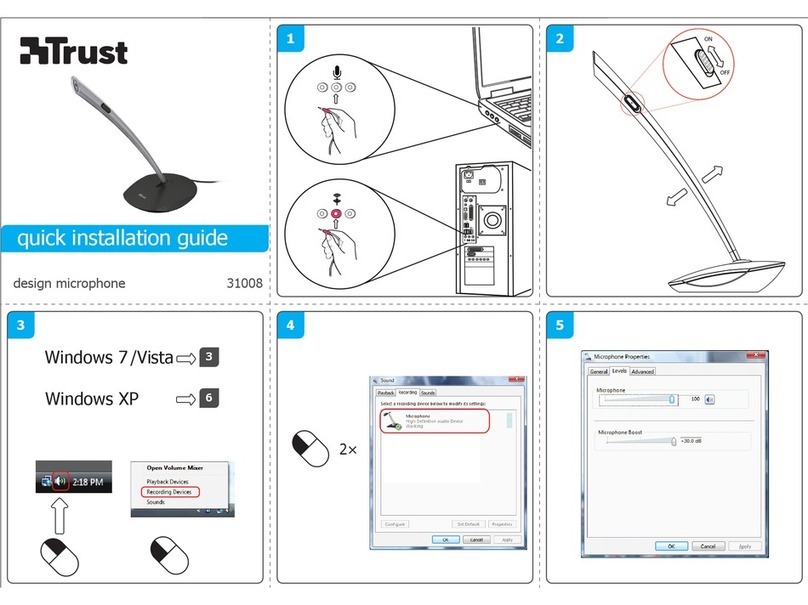
9
MODELLO SM58®
MICROFONO DINAMICO UNIDIREZIONALE
Il modello SM58 della Shure è un microfono dinamico
unidirezionale (cardioide) per applicazioni vocali realizzato per
l'utilizzo in studi di registrazione ed impianti di amplificazione
professionali. Un filtro sferico incorporato molto efficace riduce al
minimo il rumore del vento e l'effeto pop. Il diagramma polare a
cardioide isola la sorgente sonora principale e simultaneamente
riduce al minimo il rumore di fondo indesiderato. Il microfono SM58
presenta una risposta vocale ottimizzata per a fornire un suono la
cui qualità costituisce uno standard mondiale. La robustezza della
fabbricazione, il comprovato sistema di supporto antivibrazione e
la griglia in acciaio inossidabile ne garantiscono la costanza delle
prestazioni, anche quando lo si maneggia senza delicatezza. Sia
all'aperto che in interni, per canto od o parlato - l' SM58 è, a
schiacciante maggioranza, il microfono scelto dai professionisti in
tutto il mondo.
Caratteristiche
• Risposta in frequenza ottimizzata per applicazioni vocali, con
maggiore chiarezza alle frequenze intermedie e attenuazione
alle basse frequenze.
• Diagramma polare a cardioide uniforme, che isola la sorgente
sonora principale e riduce al minimo il rumore di fondo.
• Sistema pneumatico di supporto antivibrazione che riduce il ru-
more derivante dal maneggiamento.
• Efficace filtro sferico incorporato, antipop e antivento.
•Include un adattatore per supporto, resistente a rotture acci-
dentali, orientabile a 180
°
.
• Le leggendarie qualità, robustezza e affidabilità Shure.
Variaziones
SM58
SM58S (con interruttore di alimentazione ON/OFF)
EFFETTO DI PROSSIMITÀ
Quando la sorgente sonora si trova a meno di 6 mm di distanza
dal microfono, la risposta alle basse frequenze aumenta
progressivamente (da 6 a 10 dB a 100 Hz), generando un suono
dei toni bassi più ricco e caldo rispetto a distanze maggiori della
sorgente stessa dal microfono. Questo fenomeno, noto come
effetto di prossimità, si verifica solo in microfoni unidirezionali
come il modello SM58. L'attenuazione alle basse frequenze
dell'SM58 fornisce un controllo maggiore e consente a chi usa il
microfono di sfruttare pienamente l'effetto di prossimità.
APPLICAZIONI E COLLOCAZIONE
Il modello SM58, ideale per applicazioni vocali a distanza
ravvicinata, può essere tenuto in mano o montato su un supporto.
La tabella che segue ne riporta le più comuni applicazioni e
tecniche di collocazione. Rammentare sempre che le tecniche
microfoniche dipendono largamente dalle preferenze personali e
che non esiste una unica posizione "giusta" del microfono.
COLLOCAZIONE DEGLI ALTOPARLANTI PER IL
PUBBLICO E DEL MONITOR DI PALCO
Collocare l'altoparlante di controllo del palcoscenico direttamen-
te dietro il microfono (vedi Figura 1). Collocare gli altoparlanti per
il pubblico in modo che siano rivolti in direzione opposta rispetto
alla parte posteriore del microfono. Con tale disposizione degli al-
toparlanti si riduce enormemente la possibilità di feedback. Prima
della rappresentazione, controllare sempre l'allestimento del pal-
coscenico per verificare la collocazione ottimale del microfono e
degli altoparlanti di controllo.
COLLOCAZIONE SUGGERITA DEGLI ALTOPARLANTI
FIGURA 1
REGOLE GENERALI PER L'USO DEL MICROFONO
1. Rivolgere il microfono verso la sorgente sonora desiderata e
lontano da sorgenti indesiderate.
2. Collocare il microfono quanto più vicino possibile alla sorgente
sonora desiderata.
3. Per ottenere una maggiore risposta ai toni bassi, tenere il
microfono vicino a bocca.
4. Usare solo un microfono per ciascuna sorgente sonora.
5. Mantenere la distanza tra più microfoni ad un valore uguale ad
almeno tre volte la distanza tra ciascun microfono e la sor-
gente sonora.
6. Usare il numero minimo di microfoni consentito dall'applica-
zione.
7. Collocare i microfoni quanto più lontano possibile da superfici
fonoriflettenti.
8. Quando si usa il microfono all'aperto, per cantanti od oratori a
distanza ravvicinata, utilizzare uno schermo antivento.
9. Evitare movimenti eccessivi del microfono, per ridurre il
rumore di maneggiamento.
APPLICAZIONE COLLOCAZIONE DEL
MICROFONO SUGGERITA QUALITÀ DEI TONI
Cantanti e coro Bocca a meno di 15 cm dal mi-
crofono o a contatto con la gri-
glia, lungo l'asse del microfono.
Suono robusto, en-
fasi sui toni bassi,
massimo isolamen-
to da altre sorgenti.
Parlato Distanza dalle bocca compresa
tra 15 e 50 cm, ad un'altezza ap-
pena superiore a quella del naso.
Suono naturale,
toni bassi ridotti.
Distanza dalle bocca compresa
tra20 e50 cm, leggermentefuori
asse sull'uno o l'altro lato.
Suono naturale,
toni bassi ridotti e
suonisibilantiridotti
al minimo.
Distanza compresa tra 1 e 2 m. Suono lontano e
sfumato; rumore
ambientale.
ALTOPARLANTI
PER IL PUBBLICO
MONITOR DI
CONTROLLO
MICROFONO SORGENTE
SONORA

